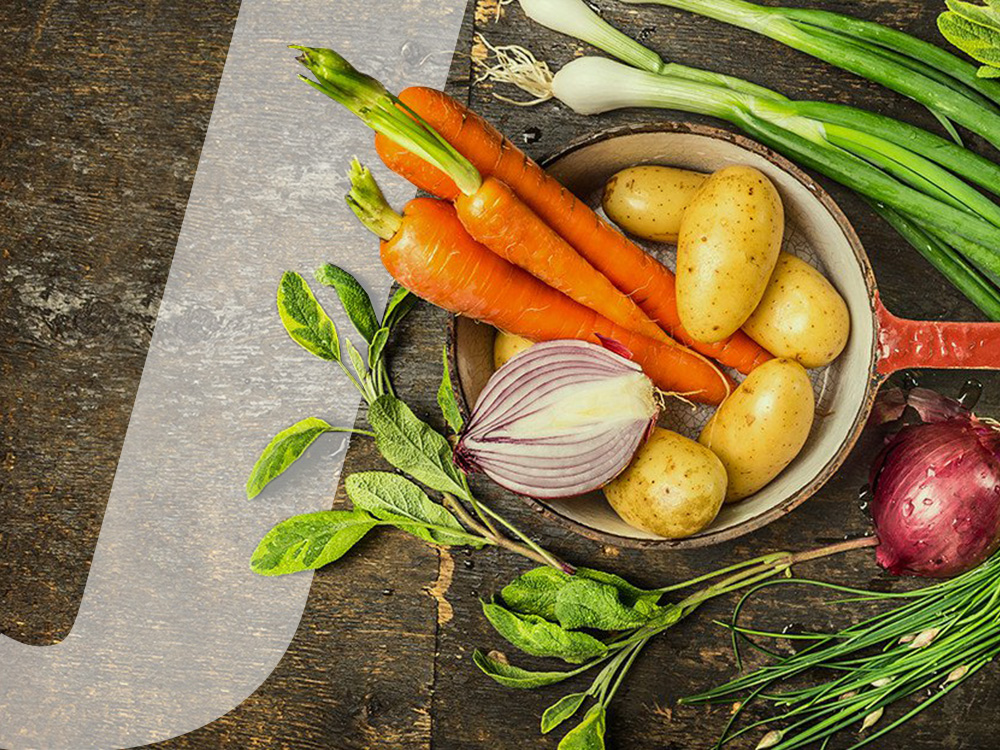
Why Grow Your Own Vegetable Garden?
Whether you’re eating clean for performance, losing weight, or want to be more mindful about your relationship with food, growing your own vegetable garden is a powerful way to clean up your diet and enhance your connection to the food you eat. Regardless of your schedule, space, and budget, you can choose an option that increases the nutrition of your food and your connection to your daily choices through growing your own vegetables.
This 4-sided fenced in garden comes complete with easy-to-open gate and fencing that is a few inches below ground to keep out the bunnies! Soon PVC piping will be added to make for a fully functional drip irrigation system to save on water and reduce weeds.

Eating clean is easier when you can “grocery shop” in your backyard. Here’s an example of a raised vegetable garden with bell peppers, jalapeno peppers, tomatoes, Hungarian hot peppers and purple lettuce.
Container Gardening For Tight Space and Schedules:
If you’re strapped for time or space, container gardens and herb gardens can make fresh produce available throughout the year. With a little supplemental light and a bright kitchen window, a small herb garden can provide you with a depth of flavor that can brighten up everything from your morning eggs to your evening bath. You can sprinkle a few seeds from a variety of herbs into a large pot. Just remember to use your garden often. Frequent trimming will prevent your herbs from flowering and going to seed, an event that leads to their completion of the life cycle and the end of your harvest from that plant. Slightly more adventurous gardeners can use the space offered by a sunny front porch or back patio to grow nearly any variety of vegetable within arm’s reach. While the yield may be lower than a large backyard garden, the time investment is also significantly smaller. The initial preparation of soil is crucial, as is watering and fertilization. Because container gardens do not have deep soil base of traditional vegetable gardens, they are vulnerable to drying out and will need frequent watering to produce vegetables of a high quality.
Here’s a little container garden of kale, green lettuce, herbs and tomatoes. Container gardens don’t require a lot of space and keep gardening simple by cutting down on weeding.
The Benefits of Heirloom Seeds:
If you’re fortunate enough to have the space and time to maintain a vegetable garden, you can supply much of your family’s diet for very little cost, knowing that the food you grow is nutritious and as natural as possible. Choosing heirloom seeds for your vegetable garden offers even greater benefits. Heirloom varieties of vegetables provide a greater level of diversity and flavor, as well as a range of production of varieties providing you with a longer growing season. While these seeds are often less expensive than hybrid varieties (another benefit), you can also save seeds from year to year offering the opportunity to further reduce gardening costs while selecting seeds from plants that have produced especially well in your particular environment. Whether you plant heirloom or hybrid seeds, your vegetables will be higher in nutrition based on your ability to consume them immediately after harvesting, preventing the nutritional degradation that comes from transporting and storing food.Gardening and Mindfulness:
Choosing heirloom seeds for your vegetable garden may also help you to become more mindful of your food, an activity that can also support reaching a healthy weight. Heirloom seeds contain a history of development that connects us to their development over time. We know where they developed and what traits were appealing. The diversity of flavors and appearances can also increase our connection to our meals. Additionally, the acts of starting seeds, planting and watering them, and even the maintenance of weeding and harvesting increase our awareness of the foods we put in our body. Involving children in this process is also an effective way to enhance their connection to and gratitude for the foods they eat. The labor of growing your own vegetable garden can be as intensive or as light as you choose. While sun loving plants such as tomatoes and peppers are typically started indoors in early spring or late winter in cold climates, you can also take advantage of local farmer’s markets to purchase seedlings to replant in your own garden. Cold tolerant vegetables such as spinach, chard, and radishes can be started as soon as the soil can be worked and summer favorites such as squash and peas can be started when the risk of frost has passed, giving you a range of dates to work with in starting your gardens.Other Ways To Foster A Deeper Connection To Food:
Farmers’ markets and community supported agriculture programs are additional ways to supplement the offerings of your vegetable garden to provide nutritious options with a local connection. You can round out your harvest by seeking out locally sourced options for protein and dairy for an even more nutritious and mindful diet. Whichever option you choose, enjoy the amazing flavor, variety, and nutrition of your summer harvest, letting it enhance your connection to each meal and your awareness of its impact on your overall health.
This homemade compost barrel was started in early spring. If you opt to grow your vegetable garden from seed, you’ll likely need to start indoors and very early in the season. A compost bin will create wonderful, nutrient-rich soil for those seedlings and also cut down on food waste. Win-win.

